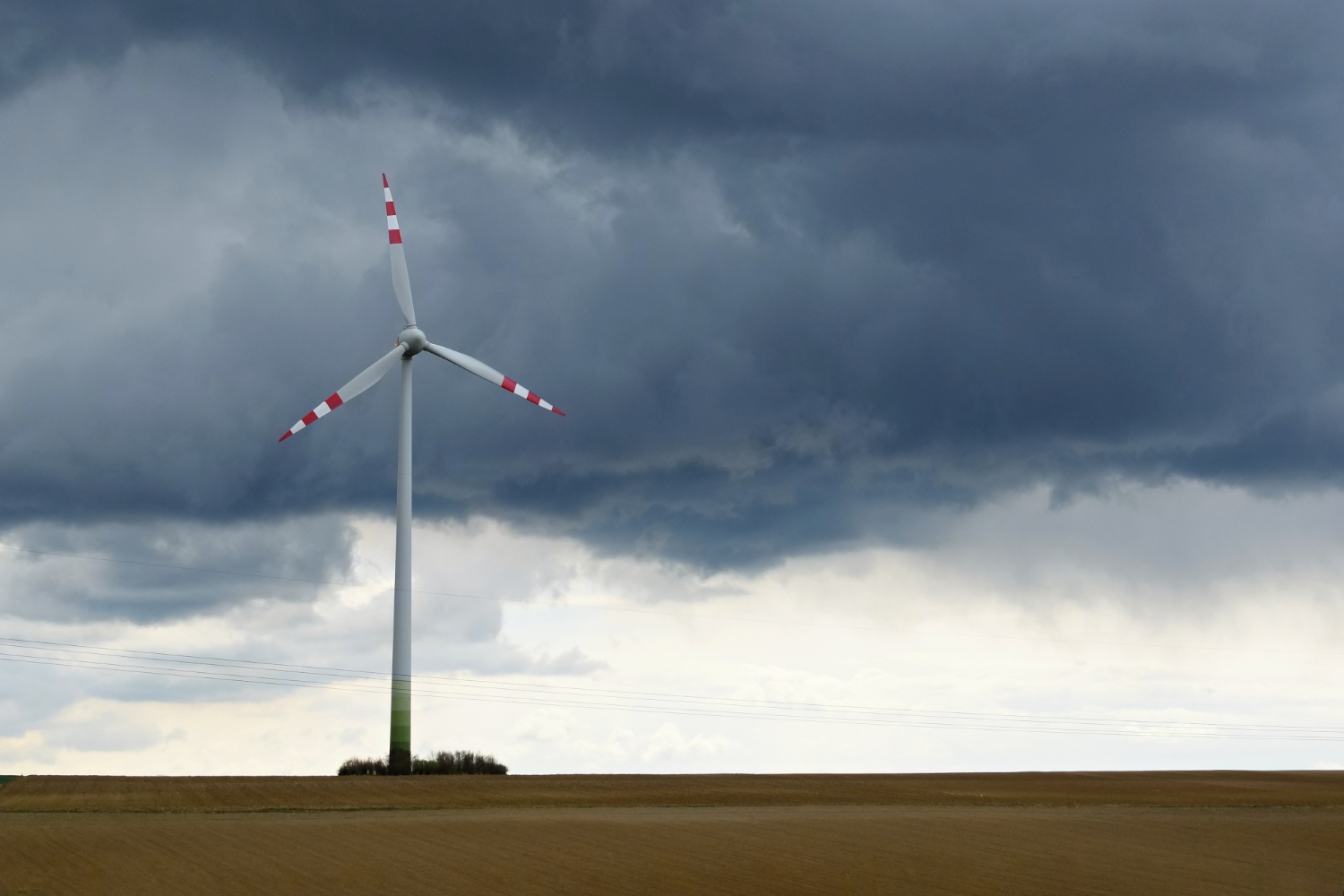The field of meteorology, renowned for its scientific exploration of the atmosphere, plays a pivotal role in both predicting weather and understanding the intricate patterns of our planet’s climate. This dynamic realm of study relies heavily on the systematic collection and interpretation of data, a process that hinges upon a broad assortment of devices engineered to meticulously measure varying atmospheric conditions. From instruments capturing temperature fluctuations to gauging wind velocity, these tools enable meteorologists to draw comprehensive weather forecasts and contribute to our knowledge of long-term climatic trends.
This article is set to provide an in-depth examination of these vital meteorological instruments, with an aim to illuminate their distinct functionalities and the diverse applications they find in our daily lives. As we journey through this exposé, we will delve into the operational specifics of each instrument, demystifying how they capture and record atmospheric data. Further, the discussion will highlight how these data serve as a bedrock for a multitude of sectors, ultimately underpinning informed decision-making, optimizing resource usage, and ensuring safety. By shedding light on these aspects, this article aspires to underscore the enduring relevance of meteorological instruments in our rapidly evolving world.
The Importance of Meteorological Instruments
Meteorological instruments serve as the bedrock for understanding weather and climate patterns, their significance extending across a myriad of sectors. Here, we delve deeper into their importance, focusing on specific sectors and how they benefit from these critical tools.
Agriculture
Agricultural activities are profoundly influenced by weather patterns. Accurate forecasting and climate data analysis guide farmers in making strategic decisions, thus maximizing productivity and minimizing losses.
- Irrigation Management: Farmers depend on data from rain gauges, hygrometers, and thermometers to manage their irrigation systems effectively. Through precise measurements of rainfall, humidity, and temperature, farmers can predict periods of drought or heavy rainfall, adjusting their irrigation practices accordingly to conserve water and ensure crop health;
- Crop Planning: Long-term climate data, including temperature trends and precipitation patterns, assists farmers in determining the most suitable crops for their land. Understanding seasonal variations in weather allows them to optimally time the planting and harvesting of crops;
- Pest and Disease Control: Certain pests and diseases proliferate under specific weather conditions. Utilizing data from meteorological instruments, farmers can anticipate these conditions and implement preventative measures to control outbreaks.
Aviation and Maritime Navigation
The aviation and maritime sectors rely heavily on accurate weather forecasts for their operational safety and efficiency.
- Flight Planning: Pilots use data from anemometers, barometers, and radiosondes to plan flights. Information about wind speed, atmospheric pressure, temperature, and humidity is crucial in determining optimal flight routes and altitudes, thereby ensuring passenger safety and fuel efficiency;
- Navigation: In maritime navigation, ship captains need to know about sea conditions, wind patterns, and storm forecasts to navigate safely. Data collected from weather buoys, anemometers, and barometers play an integral role in providing this information.
Energy Production
The renewable energy sector, especially wind and solar power, is greatly influenced by meteorological conditions.
- Wind Energy: Wind farms rely on accurate wind speed and direction data to optimize energy production. Anemometers and wind vanes are essential instruments in this process, allowing for the strategic placement of turbines and real-time adjustments to maximize efficiency;
- Solar Energy: The efficiency of solar panels is contingent on sunlight intensity, which can be forecasted with the help of pyranometers. This data assists in strategic panel positioning, energy production forecasting, and grid management.
Environmental Science and Disaster Management
Meteorological instruments contribute significantly to environmental monitoring and disaster management.
- Environmental Monitoring: Instruments like thermometers, barometers, hygrometers, and spectroradiometers are instrumental in tracking climate change, studying pollution patterns, and managing water resources. Long-term data from these instruments facilitate in-depth environmental research and the development of sustainable management strategies;
- Disaster Management: Timely warnings about severe weather conditions such as hurricanes, tornadoes, or heavy rainfall can save lives and minimize property damage. Weather radars, weather satellites, and radiosondes are essential tools in this context, enabling the accurate prediction and monitoring of such events.
Construction and Urban Planning
The construction sector and urban planning are other areas where meteorological data prove vital.
- Construction: Construction projects are vulnerable to weather conditions. Accurate weather forecasts help construction managers schedule work effectively, ensure worker safety, and prevent weather-related damage to materials and structures;
- Urban Planning: Climate data inform the design of urban spaces, like the construction of drainage systems to prevent flooding and the creation of green spaces to mitigate heatwaves.
Meteorological instruments provide indispensable support to various societal sectors. They empower us to make informed decisions, ensure safety, and make efficient use of resources. As we continue grappling with challenges such as climate
Barometers
A barometer, a critical instrument in weather forecasting, measures atmospheric pressure. Subtle shifts in this pressure can hint at impending weather changes, with a decrease often predicting an approaching storm.
- Mercury Barometers: Utilizing a glass tube filled with mercury, this traditional barometer responds to atmospheric pressure changes by adjusting the height of the mercury column. High pressure forces the mercury to rise, while low pressure results in a fall;
- Aneroid Barometers: This type houses an aneroid cell, a small, flexible metal box that expands or contracts based on atmospheric pressure changes. This movement is then converted into a mechanical dial reading, allowing for easy interpretation.
| Barometer Type | Mechanism of Action |
|---|---|
| Mercury Barometers | Height of mercury column responds to pressure changes |
| Aneroid Barometers | Aneroid cell’s contraction/expansion indicates pressure changes |
This concise presentation of barometer functionality highlights the crucial role these devices play in monitoring atmospheric pressure and thereby predicting weather patterns.
Thermometers
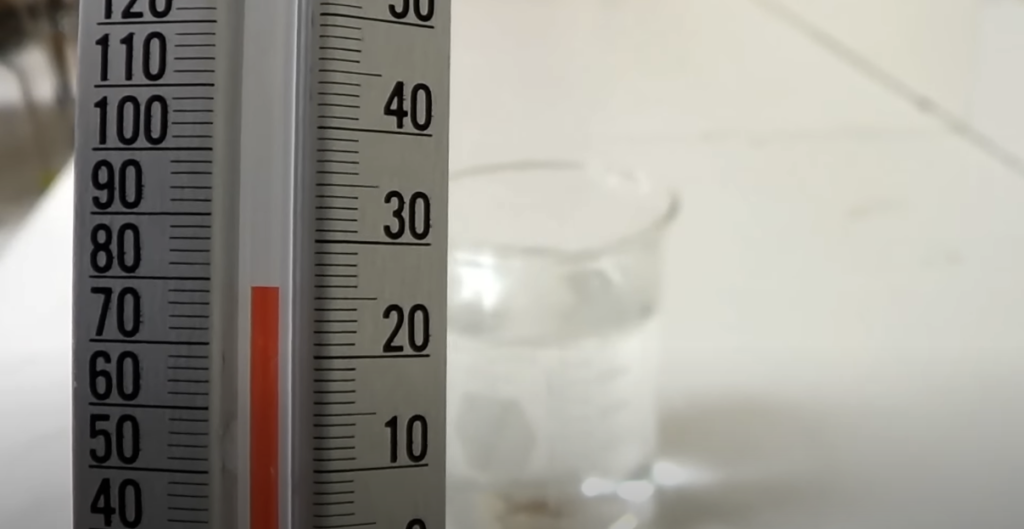
Thermometers are vital tools used to measure air temperature, a fundamental element in predicting weather patterns and understanding climate trends.
- Liquid-in-glass Thermometers: These widely-used devices typically house mercury or alcohol that expands and contracts in response to temperature fluctuations, shifting along a calibrated glass tube to give a temperature reading;
- Bimetallic Strip Thermometers: Composed of two distinct metals bonded together, these thermometers leverage the differential expansion and contraction rates of the metals in response to temperature changes. This induces a bend in the strip, which translates into a temperature reading;
- Digital Thermometers: Employing electronic sensors, or thermistors, these thermometers measure temperature by tracking the resistance changes of the thermistor with temperature, which is then converted into a digital temperature reading.
| Thermometer Type | Mechanism of Action |
|---|---|
| Liquid-in-glass Thermometers | Expansion/contraction of fluid in response to temperature |
| Bimetallic Strip Thermometers | Bend of bonded metals due to temperature-induced expansion/contraction |
| Digital Thermometers | Resistance changes in thermistor converted to a digital temperature reading |
This condensed explanation underscores the significant role of thermometers in evaluating atmospheric temperature, thereby aiding in climate analysis and weather prediction.
Hygrometers
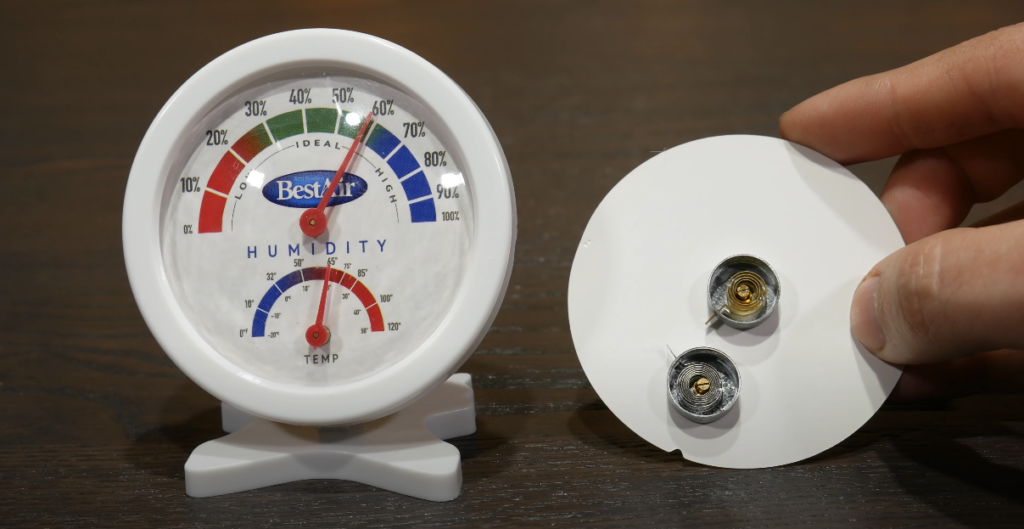
Hygrometers are devices utilized to measure humidity, which is the concentration of water vapor in the air. Accurate humidity data is pivotal for weather forecasting, influencing temperature and precipitation levels.
- Hair Hygrometers: Taking advantage of the property of human hair to alter its length in response to humidity levels, these hygrometers use a strand of hair connected to a mechanical dial to measure humidity;
- Dew Point Hygrometers: These hygrometers measure the dew point, the temperature at which air saturates with water vapor, offering a direct humidity reading.
- Psychrometers: Comprising a dry bulb thermometer and a wet bulb thermometer, these hygrometers compute relative humidity based on the temperature difference between the two readings.
| Hygrometer Type | Mechanism of Action |
|---|---|
| Hair Hygrometers | Change in hair length corresponds to humidity levels |
| Dew Point Hygrometers | Measures dew point to provide direct humidity reading |
| Psychrometers | Uses temperature difference between dry and wet bulb thermometers to determine relative humidity |
This succinct overview demonstrates the essential role of hygrometers in obtaining accurate humidity data, a crucial element in weather prediction.
Anemometers
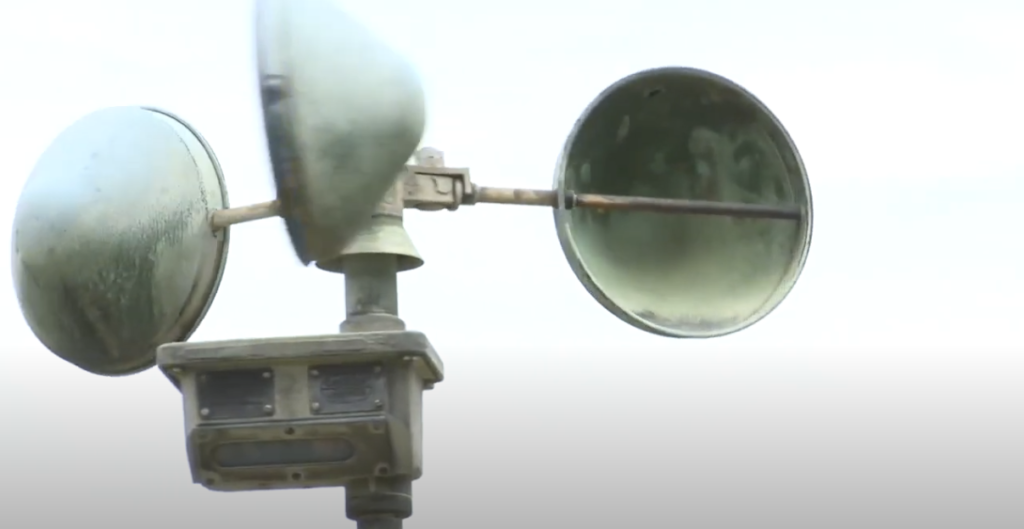
Anemometers, devices for measuring wind speed, often work in tandem with wind vanes to also assess wind direction. This information is integral to weather forecasting and finds applications in various fields such as aviation, marine navigation, and the renewable energy sector.
- Cup Anemometers: The most prevalent type, these have three or four cups mounted on horizontal arms attached to a vertical rod. Wind causes the cups and rod to rotate, with the rotation speed being proportional to the wind speed;
- Vane Anemometers: Composed of a propeller and a tail on the same axis, the wind vane aligns the instrument so the propeller directly faces the wind, ensuring maximum accuracy;
- Hot-wire Anemometers: Primarily used for precise wind speed measurements, especially in turbulent flows, these measure the cooling effect of the wind on a heated wire, converting it into a wind speed reading.
| Anemometer Type | Mechanism of Action |
|---|---|
| Cup Anemometers | Rotation speed of cups corresponds to wind speed |
| Vane Anemometers | Propeller orientation towards wind ensures accurate readings |
| Hot-wire Anemometers | Measures cooling effect on a heated wire to determine wind speed |
This brief explanation emphasizes the crucial function of anemometers in assessing wind speed and direction, a key aspect in several industries and weather prediction.
Rain Gauges
Rain gauges are fundamental instruments used to quantify rainfall over a specified duration, providing vital data for understanding precipitation patterns and trends.
- Graduated Cylinders: The simplest form of rain gauge, these devices directly collect rainfall into a cylinder and measure it in millimeters or inches;
- Tipping Bucket Rain Gauges: Incorporating a see-saw-like mechanism, these gauges record the amount of rainfall each time a certain amount falls into the collector, causing the bucket to tip and trigger a switch;
- Weighing Rain Gauges: These gauges measure the weight of the collected rainwater, converting this into an equivalent depth of rainfall.
| Rain Gauge Type | Mechanism of Action |
|---|---|
| Graduated Cylinders | Direct collection and measurement of rainfall |
| Tipping Bucket Rain Gauges | Tipping mechanism triggered by a specific amount of rainfall |
| Weighing Rain Gauges | Weighing collected rainwater to determine equivalent depth |
This compact description underscores the importance of rain gauges in quantifying precipitation, a key parameter in comprehending weather patterns.
Radiosondes and Weather Balloons
Radiosondes, encapsulating various weather instruments, are elevated into the atmosphere using weather balloons. These instruments measure a multitude of atmospheric parameters like pressure, temperature, and humidity. Additionally, they are equipped with GPS technology, enabling them to offer data on wind speed and direction.
- Pressure Measurement: Using onboard barometers, radiosondes record atmospheric pressure variations with altitude;
- Temperature Measurement: Thermistors or resistive temperature devices within the radiosondes measure ambient temperature;
- Humidity Measurement: Hygrometers incorporated in radiosondes assess atmospheric humidity;
- Wind Speed and Direction: Leveraging GPS tracking, radiosondes can infer wind speed and direction based on positional shifts over time.
| Data Type | Method of Collection |
|---|---|
| Pressure | Barometer within the radiosonde |
| Temperature | Thermistor or resistive temperature device |
| Humidity | Hygrometer within the radiosonde |
| Wind Speed and Direction | GPS tracking |
This brief description underlines the function of radiosondes and weather balloons in collecting comprehensive atmospheric data, critical to meteorological studies and weather forecasting.
Weather Satellites
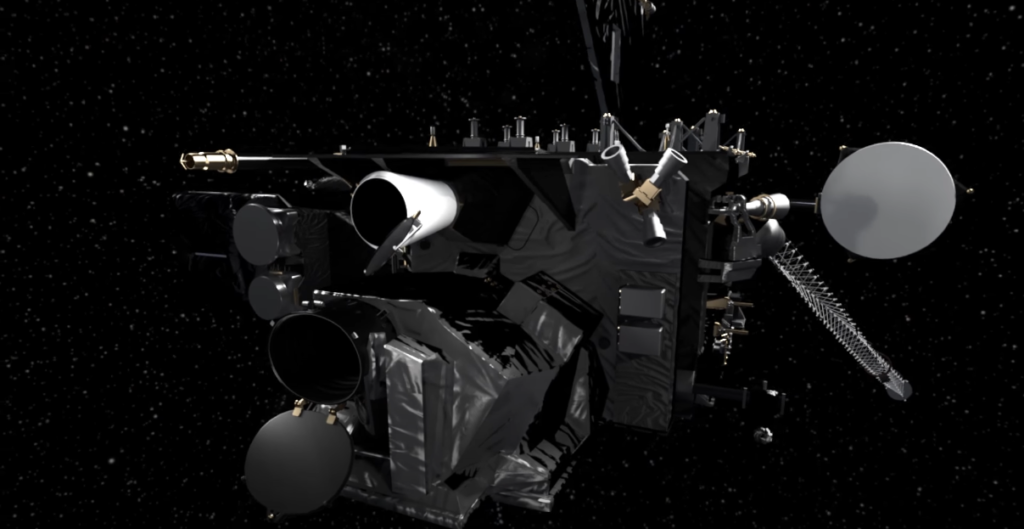
Weather satellites are an indispensable asset in contemporary meteorology. Situated in space and orbiting the Earth, these satellites offer a macroscopic view of weather systems, capturing images, measuring temperatures at various atmospheric strata, and detecting water vapor and other gases. This information is pivotal for weather forecasting, severe storm tracking, and climate change monitoring.
- Imagery: Weather satellites capture high-resolution images of weather systems across the globe;
- Temperature Measurement: They measure temperature profiles at different levels of the atmosphere;
- Gas Detection: Satellites also detect the presence of water vapor and other significant gases in the atmosphere.
| Data Type | Method of Collection |
|---|---|
| Imagery | High-resolution cameras on the satellite |
| Temperature Profiles | Temperature sensors at different atmospheric levels |
| Gas Detection | Instruments designed to detect specific gases |
This succinct overview emphasizes the role of weather satellites in providing comprehensive, large-scale weather data, essential for accurate weather forecasting and climate change monitoring.
Weather Radar
Weather radar employs radio waves to determine precipitation intensity and movement, playing a vital role in forecasting severe weather events like thunderstorms and hurricanes. Doppler radar, a specific kind of weather radar, measures the velocity of precipitation particles, enabling meteorologists to detect severe weather-associated wind patterns, such as those seen in tornadoes.
- Precipitation Intensity and Movement: Weather radars detect and monitor the intensity and movement of precipitation;
- Wind Patterns: Doppler radars measure precipitation particles’ velocity, aiding in the detection of wind patterns related to severe weather.
| Data Type | Method of Collection |
|---|---|
| Precipitation Intensity and Movement | Radar detection and monitoring |
| Wind Patterns | Doppler radar measuring precipitation particle velocity |
This brief summary underscores the significance of weather radars, particularly Doppler radars, in identifying and forecasting severe weather patterns.
Conclusion
Meteorological instruments undeniably sit at the heart of weather forecasting and climate studies, serving as the indomitable anchors that bolster our comprehension of the Earth’s atmosphere and its intricate dynamics. The impressive spectrum of these tools, encompassing traditional stalwarts like barometers and thermometers, as well as cutting-edge innovations like weather satellites and Doppler radar, provide a rich canvas for scientists and researchers to paint a detailed picture of weather patterns and climatic shifts. These instruments, through their constant monitoring and precise data collection, illuminate our understanding of the ever-evolving theater of weather phenomena, enabling more accurate predictions and facilitating sustainable planning for our changing world.
As we gaze into the future, we can confidently anticipate continued advancements in the realm of technology, which promise to further refine the precision and capabilities of these meteorological instruments. More sensitive sensors, increased data processing power, and innovative observational techniques may soon grace our weather stations and satellites, bringing unprecedented accuracy to weather forecasting and climate analysis. Such advancements will not only enhance our understanding of our planet’s climatic changes but also empower us to adapt and respond more effectively. The significance of meteorological instruments, therefore, extends beyond their immediate functions, becoming a cornerstone for our collective efforts to navigate and safeguard our shared future.
FAQs
Most meteorological instruments are checked and calibrated at least once a year. However, the frequency may increase depending on their use and exposure to environmental conditions.
Modern meteorological instruments are generally highly accurate. However, accuracy can depend on calibration, the quality of the instrument, and proper usage.
While these instruments are designed to withstand a wide range of weather conditions, extreme weather can potentially impact their performance or even damage them. Regular maintenance and proper installation can mitigate these effects.
Yes, many modern meteorological instruments have digital counterparts that provide more precise readings and often have additional features such as data logging and remote data access.
Technological advances have made meteorological instruments more accurate, reliable, and easier to use. They have also allowed for the development of new types of instruments, such as weather satellites and Doppler radar, providing meteorologists with a wider range of data for weather forecasting and climate research.
